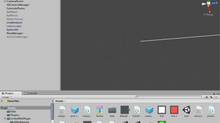Impossible Maps | The Death Map of the 1965 Communist Genocide in Aceh v.2
Links:
Last Week's TLDR;
I made a map based on these:
1. Adding onto the Death Map
For this week, the assignment is to add another data set to the map I created last week. It was really difficult finding an appropriate dataset to add because:
The killings were poorly documented
So I fell back to Jess Melvin's paper, and tried to find other findings that I could turn into data points on the map. Fortunately Melvin's paper details the chronology of the tragedy not only during the initial outbreak, but also the (military-initiated) systematic & coordinated killings that took place in Aceh after.
These killings were described in paragraphs, such as:
Locations of military-controlled killing sites in Banda Aceh include a killing site at Lhoknga beach, 15 km from the centre of Banda Aceh. At this site, detainees, who were brought to the site on the back of trucks, were “killed, decapitated [dipenggal] one by one,” or shot by members of the Military Police, before being buried in mass graves at the site.
I extracted the info from these paragraphs into 03 properties:
the location of the killing
the method of killing
were civilians coerced to participate in the killing
The GeoJSON format (I used google maps to extract the coordinates)
{ "type": "Feature", "properties": { "name" : "Burlintang Mountain", "method" : ["gunshot", "throat-slit", "thrown off cliff"], "isCivilian" : true }, "geometry": { "type": "Point", "coordinates": [ 97.3413, 4.0291 ] } }
One issue I encountered as I was making the data set was not being able to find these local places on Google Maps. Perhaps it is because the locations now have a new name, do not exist anymore, or Google Maps has not yet located them. As a result, I had to leave 2 data points out of the map.
2. Designing the Additional Data in
In the previous map, I decided on a slider element to represent a "timeline".
According to the paper, the post-outbreak killings happened after the military detained the survivors of the initial killings. However, it is unclear chronologically when the final death count was compiled and when the post-outbreak killing happened. So, where in the slider should I show the additional dataset?

While the post-outbreak killings most probably happened way after the death count was compiled, I decided to put them together with the total count because together they create the conclusion to the "story" I want to tell: there were numerous horrible deaths.
Other design decisions I made in this iteration:
Changed the circles symbolizing the death count into blurry circles. This is because I feel that a blurred out circle communicates the uncertainty of the data better.
I used a white "X" for post-outbreak killing sites, as black is not legible and a skull icon would just feel inappropriate.
I added "outbreak" and "post-outbreak" in the legends to communicate the chronology better.
Some Reflections
I feel that a conventional map is not well equipped to tell a story that has temporal jumps and/or data with temporal element in general.
Having said that, approaching a map as a web artifact should provide alternatives to incorporate temporal elements. I "compensated" with a slider, but with this new data addition, it would have been better to have a transitional screen, or like, a pop up that would properly segue from total public death count to the sites of systematic killings.
As it is now, I feel that there is a missing link in the map/story.












